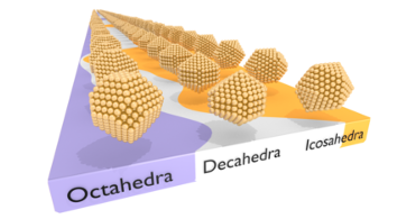Hot-carrier generation and transfer across nanoparticle-molecule interfaces
J. Fojt
Master′s Thesis
(2020)
doi: 20.500.12380/301432
Download PDF

Metallic nanoparticles are important materials for emerging sensing and catalysis technologies. Their special properties stem from the presence of a localized surface plasmon resonance (LSPR) mode that can couple to visible light. The LSPR causes the nanoparticle to scatter and absorb more light at frequencies that match the plasmon energy. The plasmon excitation has a lifetime of a few femtoseconds before it dephases into electrons and holes with a strongly athermal energy distribution. In this thesis, time-dependent density functional theory has been employed to study these phenomena in Ag nanoparticles. In the first part of this thesis, the photoabsorption spectra were systematically calculated for a series of Ag nanoparticles. The particles were between N=13 and 586 atoms in size and included both regular and irregular shapes. The main findings are that the LSPR peak frequency depends linearly on N−1/3 for N≥ 201. When a plasmon forms in a nanoparticle in the vicinity of a molecule it may dephase into a transition of an electron from the nanoparticle to the LUMO state of the molecule, or from the HOMO state of the molecule to an unoccupied state in the nanoparticle. These processes are termed direct hot-electron transfer and direct hot-hole transfer, respectively. In the second part of the thesis, a systematic study was carried out in which a CO molecule was placed at different distances from the nanoparticle, and the system was excited with a laser pulse. The results indicate that for this system direct hot-electron transfer happens with a probability of around 1% and is only weakly dependent on the molecule-nanoparticle separation until it decays to zero at large distances. Meanwhile, the probability of hot-hole transfer is between 0.2 and 0.3% at a distance of 1.8 Å and decays monotonically. Contributing factors to the differences are that the molecular LUMO state is sufficiently close to the Fermi level for hot-electron transfer to occur, while only hybridized tails of the HOMO state satisfy the corresponding requirement for hot-hole transfer. The most important criterion for transfer to occur is


